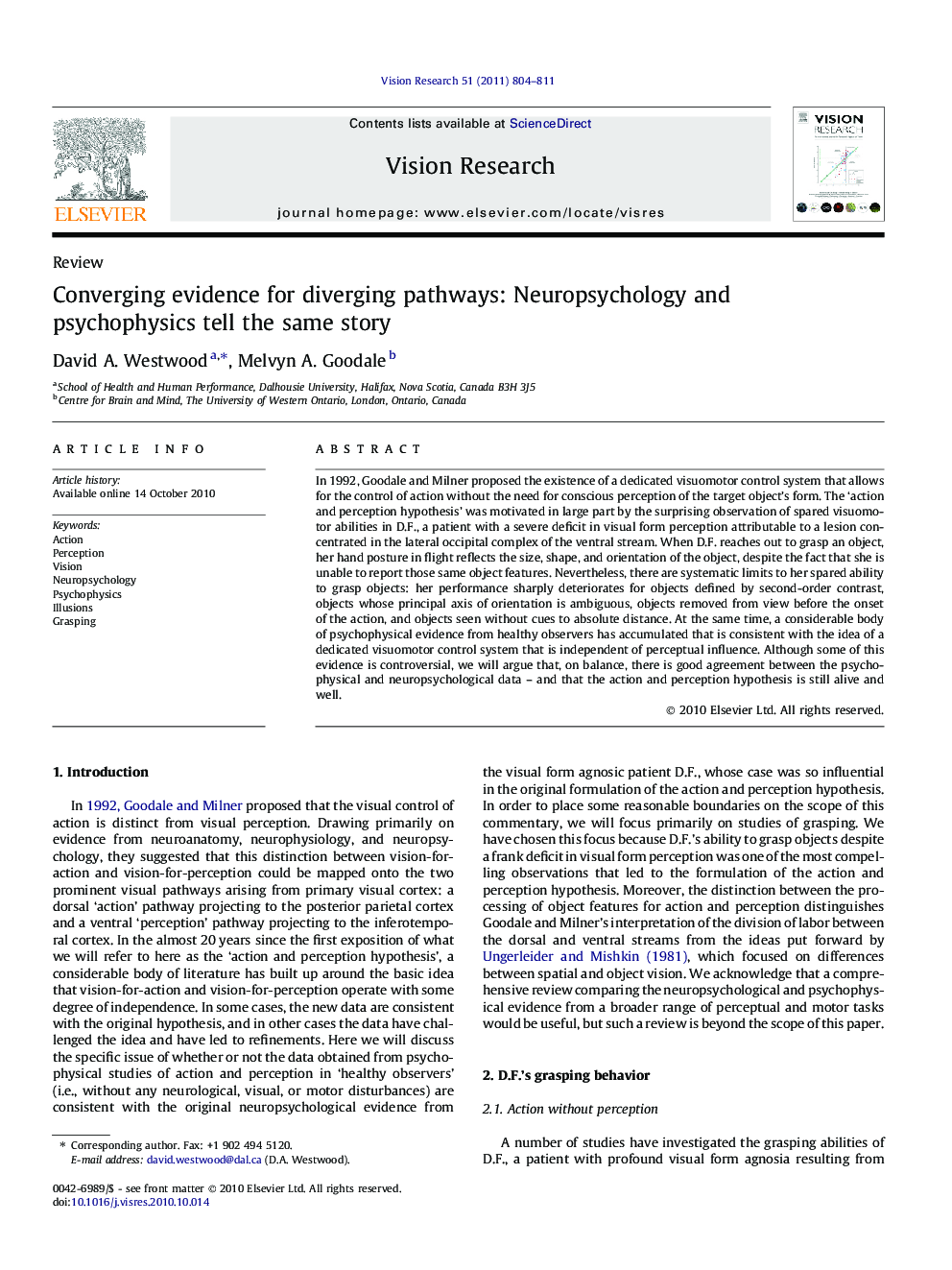| Article ID | Journal | Published Year | Pages | File Type |
|---|---|---|---|---|
| 4034362 | Vision Research | 2011 | 8 Pages |
In 1992, Goodale and Milner proposed the existence of a dedicated visuomotor control system that allows for the control of action without the need for conscious perception of the target object’s form. The ‘action and perception hypothesis’ was motivated in large part by the surprising observation of spared visuomotor abilities in D.F., a patient with a severe deficit in visual form perception attributable to a lesion concentrated in the lateral occipital complex of the ventral stream. When D.F. reaches out to grasp an object, her hand posture in flight reflects the size, shape, and orientation of the object, despite the fact that she is unable to report those same object features. Nevertheless, there are systematic limits to her spared ability to grasp objects: her performance sharply deteriorates for objects defined by second-order contrast, objects whose principal axis of orientation is ambiguous, objects removed from view before the onset of the action, and objects seen without cues to absolute distance. At the same time, a considerable body of psychophysical evidence from healthy observers has accumulated that is consistent with the idea of a dedicated visuomotor control system that is independent of perceptual influence. Although some of this evidence is controversial, we will argue that, on balance, there is good agreement between the psychophysical and neuropsychological data – and that the action and perception hypothesis is still alive and well.
Research highlights► We review evidence from human neuropsychology and psychophysics about the relationship between action and perception. ► We critique the idea that effects of visual illusions need to be ‘corrected’ by the underlying size-scaling function for particular responses. ► We propose that many studies from human neuropsychology and psychophysics converge on the idea that action and perception are mediated by distinct but interacting visual systems.
